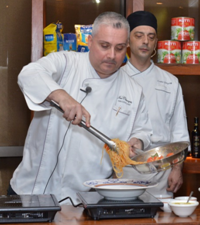 What is it about Pasta, that makes it so popular across the world? A simple dish, one would think, that lends itself easily to blend in with an assorted range of sauces as per one’s liking. Yet, there is subtlety involved. Makes one wonder if it is a secret recipe or some magic, that the Italians get it so right! One open secret is that in Italy, the manufacturing process is strictly monitored, and the cooking process is a fine art. The Italian Trade Agency in Delhi, as part of their fourth edition of celebration of World Week of Italian Cuisine, shared a detailed booklet about Pasta. We bring the excerpts here for our readers.
What is it about Pasta, that makes it so popular across the world? A simple dish, one would think, that lends itself easily to blend in with an assorted range of sauces as per one’s liking. Yet, there is subtlety involved. Makes one wonder if it is a secret recipe or some magic, that the Italians get it so right! One open secret is that in Italy, the manufacturing process is strictly monitored, and the cooking process is a fine art. The Italian Trade Agency in Delhi, as part of their fourth edition of celebration of World Week of Italian Cuisine, shared a detailed booklet about Pasta. We bring the excerpts here for our readers.
History of Pasta
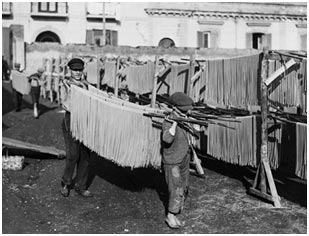
Pasta dates back to the origin of civilisation, when humans abandoned their nomadic life for agriculture and began farming wheat. That precious grain could be blended with water, stretched into thin sheets and baked on hot rocks. That same recipe conquered Rome at the time of Cicero, who wrote about laganum, the forerunner of pasta strips similar to modern tagliatelle. Medieval times saw the flowering of innovation and inventiveness resulting development of Italian pasta making – with creation of hollow and filled, fresh and dried pasta, that was sauced according to local culinary traditions. Pasta making expanded to include many types, forms and cooking methods, from baking in an oven to boiling in a pot. However, the advent of drying, which originated with nomadic desert populations, is still one of the key processes in pasta making today because it allowed pasta to be carried on long journeys in areas with not enough water for fresh preparation every day.
The popularity of pasta led to innovations and invention of pasta making machines, which in turn made it into an affordable food. Over time, centres of production were established with a dense network of small manufacturers, a process that reached its apex in the XVI century. Italy is the world’s top producer, exporter and consumer of pasta, with an annual percapita consumption of 25 kg.
Pasta Making Process
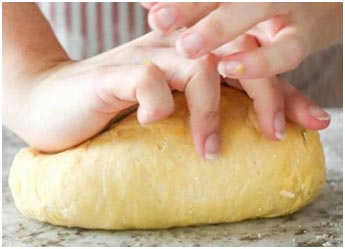
While the way dry pasta is made has changed over time, the product itself has remained the same: a simple blend of flour and water.In Italy, while fresh pasta can also be made with soft wheat flour, dry pasta is made exclusively with durum wheat semolina, which contains gluten, a tenacious substance that remains al dente even when boiled.
- SELECTION – Selecting the durum wheat is key and influences the quality of the final product. Pasta makers use only the highest quality durum wheat that comes from the heart of the kernel without the bran. It has a uniform yellow colour and high protein content, with high-quality gluten.
- MILLING – Wheat is brought to a mill to be dried, cleaned and ground. During the milling process, the kernels pass through a series of separators that break them down, remove their external layers and grind them into progressively finer flour. The last phase refines the flour and creates a product called semolina.
-
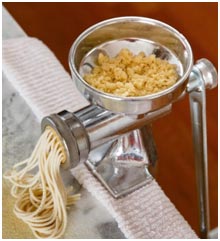 DOUGH – Wheat semolina is then kneaded with very pure water. The starch and protein in the wheat bind with the water to form gluten, a protein network that holds the hydrated starch granules together.
DOUGH – Wheat semolina is then kneaded with very pure water. The starch and protein in the wheat bind with the water to form gluten, a protein network that holds the hydrated starch granules together. - EXTRUSION – During the extrusion phase, the dough is moulded by dies into one of many possible shapes. An extrusion die has holes at its entrance and exit points that form the dough into a specific shape as it is pushed out of the pasta-making machine. The holes in the dies can be made of bronze or covered with Teflon. Bronze die extrusion creates a very rough and porous surface on pasta,which helps sauces to cling much better. Teflon die extrusion, on the other hand, creates pasta that is smoother, and more lustrous and elastic.
- DRYING – Drying is the most critical part of the entire pasta production process. During this phase, pasta is left to rest inside dryers that are ventilated with hot air, which reduces their water content down to the 12.5% max moisture level provided for by Italian law. The length of the drying process will vary depending on the type of pasta being produced. The final product is then slowly cooled at room temperature.
- PACKAGING – At the end of the production cycle, pasta is packaged in various types of boxes and bags depending on its shape and size. Packaging serves two purposes:to protect the product from external contaminating agents and to provide consumers with full nutritional information.
Types of Pasta
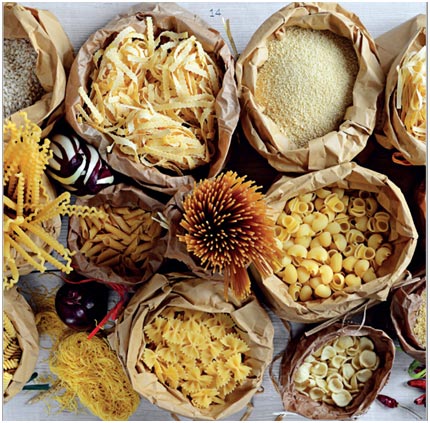
Today, there are more than 300 types of pasta available in Italy. They are classified as: dry or fresh; hollow or filled; long or short; smooth or ridged. The many different shapes are not just the result of vivid imaginations; they actually have very different tastes, consistencies and are paired with different types of sauces.
Based on shape Pasta falls into two basic categories – Long Pasta (Spaghetti) and Short Pasta (Penne).
Long Pasta (Spaghetti) –
WIDE – lasagne, reginette and pappardelle
NARROW – capellini, tagliolini and fettuccine
RECTANGULAR OR FLAT – trenette and linguine
ROUND – spaghetti and vermicelli
TUBULAR – bucatini
Short Pasta (Penne) –
SMALL OR SOUP PASTA – quadrucci, stelline and ditalini
MEDIUM – conchiglie and orecchiette
LARGE – rigatoni and fusilli
STUFFED – ravioli and agnolotti
DECORATIVE–ruote
The Pasta Diet is Healthy
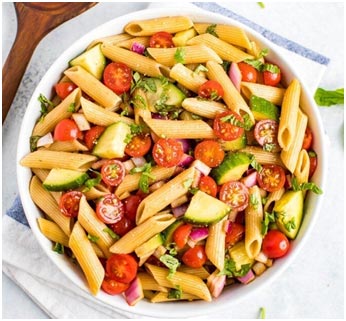
Pasta is at the heart of the Mediterranean Diet. Pasta contains complex carbohydrates, which are better than simple sugars in providing slow-release energy and therefore, satiates hunger for a long time. Contrary to common beliefs and many studies, weight gain and obesity are caused by consuming excess calories and not carbohydrates. Thanks to its essential nutrients, guidelines for healthy eating based on a 2,000-calorie-a-day diet advise having pasta every day and making it 45% to 64% of the total calories derived from such nutrients, along with other grains at every meal.
Pasta contains a lot of folic acid, an essential vitamin for women in their fertile years. An average portion of dry pasta provides 100 mg of folic acid, which is about 25% of the recommended daily intake (RDI). Sugars from carbohydrates are a fundamental source of energy for our brains and muscles. Pasta is different from other types of carbohydrates because it has a low glycemic index (GI). Maintaining a low GI is an effective way of fostering heart health and preventing some of the most common cardiovascular diseases.
5 Simple Ways to Cook Pasta and Seven Simple Recipes.
[wds id=”1″]
